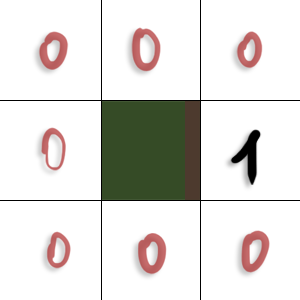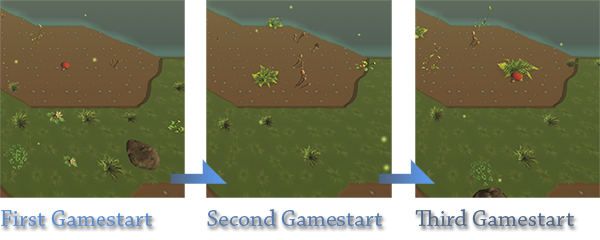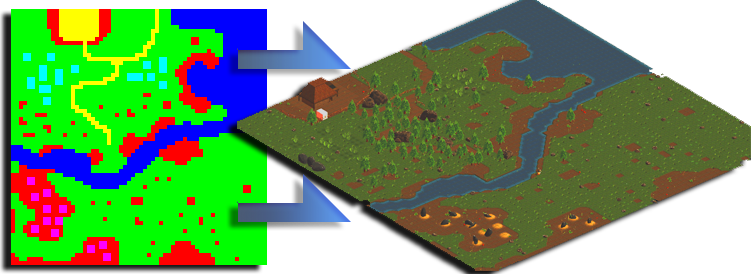Recently I was asked how my terrain system works,
so I thought this could be explained in a little update, along with pictures.
Its a pretty simple and quick-made system to be honest !
Basically it consists of mesh tiles which arrange themselves according to a worldmap-texture.
I got 3-5 different ground types on a single map, for example: grass, dirt, water, road and small heaps of sand.

Every tile logically has 8 adjacent neighbours, so all I do is asking every tile - one after another -
which nearby tile (pixel on the worldmap texture) isnt of the same/own type.
A matrix occurs. Example:

Every "0" represents another grass tile, like the one in the middle.
Just the one on the right, represented by a "1" is a dirt tile.
The one in the middle would change to a grass-dirt-transition tile and finally
rotate itself towards the adjacent dirt tile.
The last automated procedure is the creation of clutter. Clutter is just small, randomly placed foliage that doesnt serve any purpose besides looking nice. :)

So after every Gamstart or new year, the clutter will be placed differently like those
grasspatches on a grassland in nearly any engine you can imagine. basic stuff.
Since I created just a small count of tiles, there are of course some limitations.
For instance can a grasstile never exist alone, it always has to be at least a batch of 4
of them to generate a flawless terrain.
Nevertheless, this simple terrain system is very grateful when it comes
to quickly creating new worlds and regions.
I only have to paint a basic layout and load it in !
Please support me at: Igg.me !



Interesting. =o
thank you. :)
yeah, why no easy readings about some mechanics, right ?
I always like simple stuff. :D
Well then that's something.
Interesting. And unique.